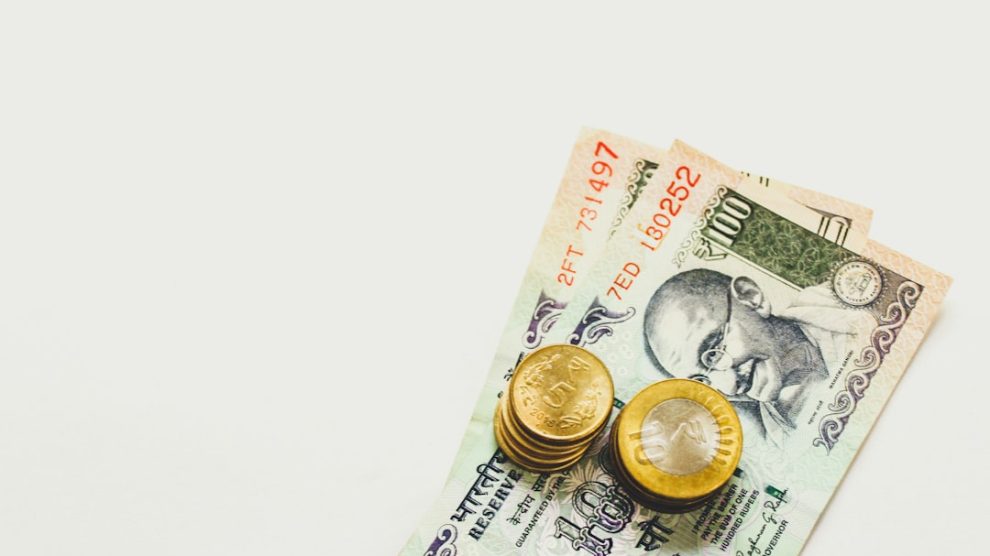An emergency fund is a financial safety net that provides individuals and families with a cushion to fall back on in times of unexpected expenses or income loss. It is essentially a pool of money set aside specifically for emergencies, such as medical bills, car repairs, or job loss. Having an emergency fund is crucial because it offers financial security and peace of mind.
One of the main benefits of having an emergency fund is the sense of security it provides. Knowing that you have money set aside for unexpected expenses can alleviate a great deal of stress and anxiety. It allows you to handle emergencies without having to rely on credit cards or loans, which can lead to debt and financial hardship.
Additionally, an emergency fund provides a sense of control over your finances. It gives you the ability to handle unexpected expenses without disrupting your regular budget or dipping into other savings goals. This can help you maintain financial stability and avoid falling into a cycle of debt.
Setting Financial Goals: Establishing the Right Emergency Fund Target
Determining the appropriate amount for your emergency fund depends on various factors, including your income, expenses, and lifestyle. A general rule of thumb is to aim for three to six months’ worth of living expenses. However, this target may vary depending on your individual circumstances.
For example, if you are single and have a stable job with minimal expenses, you may be able to get by with a smaller emergency fund. On the other hand, if you are married with children and have a mortgage or other significant financial obligations, you may need a larger emergency fund to cover your expenses in case of job loss or other emergencies.
It’s important to assess your own situation and determine what amount would provide you with a sufficient safety net. Consider factors such as your monthly expenses, the stability of your income source, and any potential risks or uncertainties in your life. By setting realistic goals for your emergency fund, you can ensure that you are adequately prepared for unexpected financial challenges.
Budgeting Strategies: Allocating Funds for Your Emergency Fund
Once you have established your emergency fund target, the next step is to allocate funds towards it in your budget. This requires careful planning and prioritization. Here are some practical tips to help you save money for your emergency fund:
1. Cut back on unnecessary expenses: Take a close look at your monthly expenses and identify areas where you can cut back. This could include reducing dining out, canceling unused subscriptions, or finding more affordable alternatives for certain services.
2. Automate savings: Set up automatic transfers from your checking account to your emergency fund. This ensures that a portion of your income is consistently being allocated towards your emergency fund without requiring any additional effort on your part.
3. Make your emergency fund a priority: Treat your emergency fund as a non-negotiable expense in your budget. Just like you prioritize paying bills or saving for retirement, make it a habit to allocate a certain amount towards your emergency fund every month.
By implementing these budgeting strategies, you can gradually build up your emergency fund over time and ensure that it remains a priority in your financial plan.
Saving Techniques: Tips and Tricks for Building Your Emergency Fund
In addition to traditional budgeting strategies, there are various creative ways to save money for your emergency fund. Here are some tips and tricks to help you increase your savings:
1. Sell unused items: Take inventory of your belongings and identify items that you no longer need or use. Consider selling them online or hosting a garage sale to generate extra cash that can be put towards your emergency fund.
2. Take on a side hustle: Explore opportunities to earn additional income outside of your regular job. This could include freelancing, tutoring, or participating in the gig economy. Direct the extra earnings towards your emergency fund to accelerate your savings.
3. Participate in cashback programs: Take advantage of cashback programs offered by credit cards or online shopping platforms. By earning cashback on your purchases, you can accumulate additional funds for your emergency fund without changing your spending habits.
Remember, every little bit counts when it comes to building your emergency fund. By thinking outside the box and finding creative ways to save, you can accelerate your progress and reach your target sooner.
Investment Options: Maximizing Your Emergency Fund’s Potential Growth
While the primary purpose of an emergency fund is to provide quick access to cash in times of need, it’s still important to consider options for maximizing its potential growth. Here are some investment options to consider for your emergency fund:
1. High-yield savings accounts: These accounts offer higher interest rates compared to traditional savings accounts, allowing your emergency fund to grow at a faster rate. Look for accounts that offer competitive rates and minimal fees.
2. Money market accounts: Money market accounts are similar to savings accounts but typically offer higher interest rates. They also often come with check-writing privileges, making it easier to access your funds when needed.
3. Certificates of Deposit (CDs): CDs are time deposits that offer a fixed interest rate for a specified period of time. While they may not provide immediate access to your funds, they can offer higher interest rates compared to regular savings accounts.
When choosing an investment option for your emergency fund, consider factors such as liquidity, risk tolerance, and potential returns. It’s important to strike a balance between accessibility and growth potential to ensure that your emergency fund remains readily available while still earning a reasonable return.
Emergency Fund vs. Savings Account: What’s the Difference?

It’s important to understand the difference between an emergency fund and a regular savings account. While both serve as financial reserves, they have different purposes and should be used accordingly.
An emergency fund is specifically designated for unexpected expenses or income loss. It is meant to provide a safety net in times of financial hardship and should only be tapped into for true emergencies. The goal of an emergency fund is to maintain financial stability and avoid going into debt.
On the other hand, a regular savings account is more flexible and can be used for various purposes, such as saving for a vacation, a down payment on a house, or other long-term goals. Unlike an emergency fund, a regular savings account does not need to be readily accessible at all times.
It’s important to have both an emergency fund and a regular savings account to cover different types of expenses. By keeping these funds separate, you can ensure that your emergency fund remains intact and readily available when you need it most.
Using Your Emergency Fund: Knowing When and How to Tap into Your Safety Net
Knowing when and how to use your emergency fund is crucial to ensure that it serves its intended purpose. Here are some guidelines to help you determine when it’s appropriate to tap into your emergency fund:
1. Unexpected medical expenses: If you or a family member faces unexpected medical bills that are not covered by insurance, it may be appropriate to use your emergency fund to cover these expenses.
2. Job loss or income reduction: If you experience a sudden loss of income or a significant reduction in your earnings, your emergency fund can help bridge the gap until you find a new job or stabilize your financial situation.
3. Major car repairs or home repairs: If your car breaks down or your home requires urgent repairs, using your emergency fund can help cover these unexpected expenses without disrupting your regular budget.
When accessing your emergency fund, it’s important to do so in a responsible manner. Only withdraw the amount necessary to cover the expense at hand and avoid using it for non-emergency purposes. Remember, the goal is to maintain financial stability and avoid going into debt.
Rebuilding Your Emergency Fund: Recovering from Financial Setbacks
After using your emergency fund, it’s important to prioritize rebuilding it as soon as possible. Here are some steps to help you recover from financial setbacks and rebuild your emergency fund:
1. Assess your financial situation: Take a close look at your income, expenses, and any outstanding debts. Identify areas where you can cut back on expenses or increase your income to free up funds for your emergency fund.
2. Create a new budget: Adjust your budget to reflect your current financial situation. Make saving for your emergency fund a priority and allocate a certain amount towards it every month.
3. Set realistic goals: Determine how much you need to save and set realistic goals for rebuilding your emergency fund. Break it down into smaller milestones to make the process more manageable.
By taking proactive steps to rebuild your emergency fund, you can regain financial stability and be better prepared for future emergencies.
Emergency Fund for Businesses: Protecting Your Business from Financial Risks
Just like individuals, businesses also need emergency funds to protect themselves from unexpected financial risks. Here are some tips for establishing and maintaining an emergency fund for your business:
1. Determine the appropriate amount: Assess your business’s monthly expenses and determine how much you would need to cover at least three to six months’ worth of operating costs. This will serve as your target for your business’s emergency fund.
2. Set aside funds regularly: Allocate a portion of your business’s profits towards the emergency fund on a regular basis. Treat it as a non-negotiable expense in your budget.
3. Replenish the fund after use: If you need to tap into your business’s emergency fund, make it a priority to replenish it as soon as possible. Adjust your budget and allocate additional funds towards rebuilding the emergency fund.
Having an emergency fund for your business can provide peace of mind and help you navigate unexpected financial challenges. It can also help you maintain business operations and avoid going into debt during difficult times.
The Benefits of a Solid Emergency Fund and Financial Stability
In conclusion, having a solid emergency fund is crucial for financial stability and peace of mind. It provides a safety net to protect against unexpected expenses or income loss, allowing individuals and families to maintain financial stability and avoid going into debt.
By setting realistic goals, implementing budgeting strategies, and utilizing saving techniques, individuals can gradually build up their emergency fund over time. Exploring investment options can also help maximize the growth potential of the emergency fund.
It’s important to understand the difference between an emergency fund and a regular savings account and use them accordingly. Knowing when and how to tap into your emergency fund is crucial to ensure that it serves its intended purpose.
Finally, businesses should also establish and maintain an emergency fund to protect themselves from financial risks. By taking proactive steps to build and maintain an emergency fund, individuals and businesses can achieve greater financial stability and be better prepared for unexpected challenges.









Add Comment